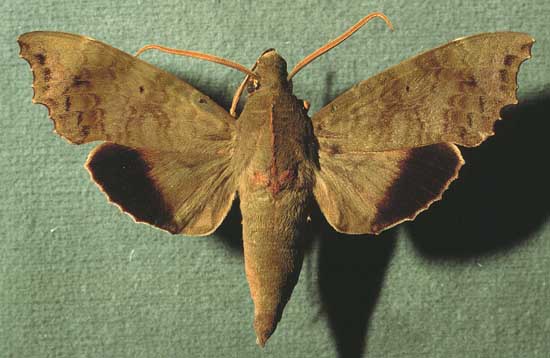
Aleuron chloroptera male courtesy of Dan Janzen.
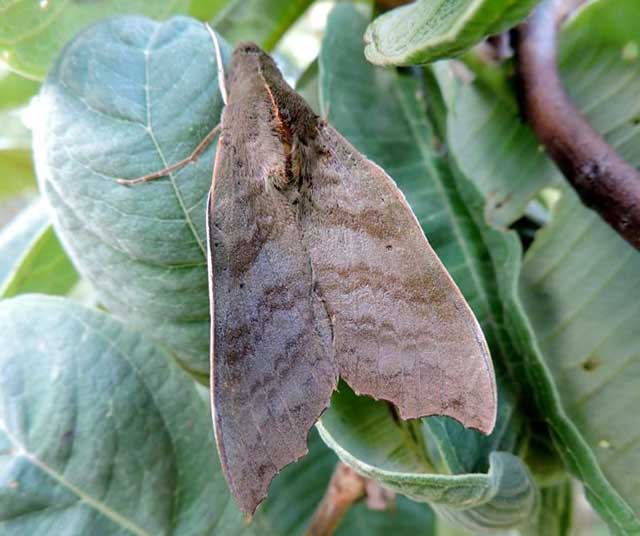
|
|
Updated as per More, Kitching and Cocucci's Hawkmoths of Argentina 2005, October, 2007 Updated as per All Leps Barcode of Life, October, 2007 Updated as per http://www.pybio.org/SPHINGINAE.htm (Paraguay), October 2007 Updated as per http://biological-diversity.info/sphingidae.htm (Belize), October 2007 Updated as per Sphingidae (Lepidoptera) de Venezuela, Compilado por: Maria Esperanza Chacon; December 2009 Updated as per Fauna Entomologica De Nicarauga, November 2007 Updated as per The Known Sphingidae of Costa Rica, November 2007 Updated as per personal communication with Jose Monzon (Guatemala); May 2009 Updated as per AN ANNOTATED CHECKLIST OF THE SPHINGIDAE OF BOLIVIA, December, 2009 Updated as per CATE (description; Rio Madeira, Brazil; Cayo, Belize); February 18, 2011 Updated as per "A Hawk Moths fauna of southern Maranhao state, Brazil, ... "; NEVA: Jahrgang 34 Heft 3 November 2013; via Jean Haxaire; April 5, 2014 Updated as per personal communication with Ezequiel Bustos (Shilap revta. lepid. 43 (172) diciembre, 2015, 615-631 eISSN 2340-4078 ISSN 0300-5267), January 4, 2016 Updated as per Hawk-moths (Lepidoptera: Sphingidae) of Trinidad, West Indies: an illustrated and annotated list; Matthew J.W. Cock; April 6, 2022 |


TAXONOMY:
Family: Sphingidae, Latreille, 1802 |
Distinguished from all other Aleuron (except Aleuron prominens) by the almost uniform grey-green forewing upperside with a small black submarginal spot on M2, and a similarly coloured hindwing upperside with a broad, black marginal band. CATE
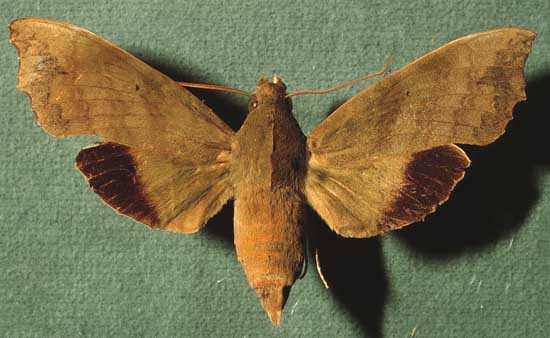
Aleuron chloroptera female courtesy of Dan Janzen.
Moths are poorly attracted to lights but visit puddles and flowers (Callianra, Inga, Duranta) at dusk. Moths rest with the hindwings protruding slightly ahead of the forewing costa.
Larvae feed on Curatella americana and probably other members of Dilleniaceae family.In Mato Grosso, Brazil, Eurides Furtado and Jean Haxaire report them on Davilla nitida with larval development requiring approximately 48 days.
|  |
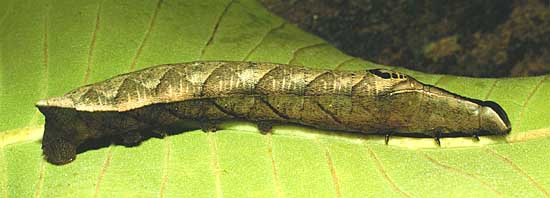
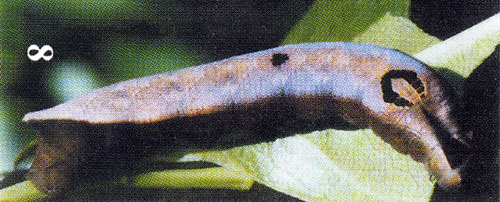

Aleuron chloroptera fifth instar courtesy of Eurides Furtado.
Eclosion is approximately 18 days after pupation. The pupae are smooth and shiny, orange with black markings. |
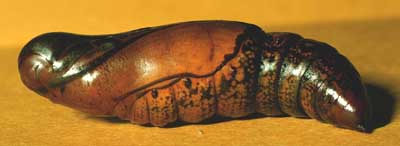 |
The larvae have very long "horns" in the early instars and are green.
Return to Sphingidae Index
Return to Dilophonotini Tribe
Use your browser "Back" button to return to the previous page.
This page is brought to you by Bill Oehlke and the WLSS. Pages are on space rented from Bizland. If you would like to become a "Patron of the Sphingidae Site", contact Bill.
Please send sightings/images to Bill. I will do my best to respond to requests for identification help.
Enjoy one of nature's wonderments: Live Saturniidae (Giant Silkmoth) cocoons.
 Show appreciation for this site by clicking on flashing butterfly to the left. The link will take you to a page with links to many insect sites. |